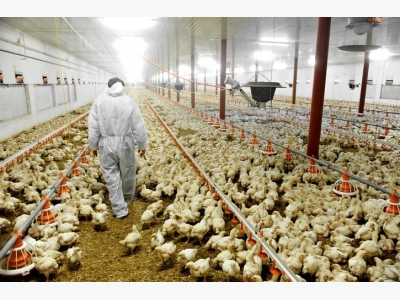How can feed influence gut performance in birds?

Photo: © GettyImages
Experts from AB Agri, the University of Ghent in Belgium, and Wageningen in the Netherlands, along with an industry consultant form the panel in our live webinar on poultry gut health at the end of this month.
They will talk about how feed formulation, management practices and feed additives can impact bird intestinal health.
Since the ban on the use of growth-promoting antibiotics in animal feed in the EU, dysbiosis has emerged as a major problem in intensive animal production, says the University of Ghent’s Professor Richard Ducatelle.
Dysbiosis or dysbacteriosis is defined as a shift in the intestinal microbiota composition resulting in an imbalance between beneficial and harmful bacteria.
Preventing dysbiosis may help to improve poultry performance, health, and welfare, and reduce foodborne pathogens and the environmental impact of poultry production.
During our webinar on 31 May, Prof Ducatelle will outline how certain feed additives can protect intestinal health in birds.
Ade Adebiyi, a poultry nutritionist at ABN, the compound feed business of AB Agri in the UK, will tell us about the importance of using quality feed raw materials in formulations to avoid a negative impact on broiler gut health.
Ade’s clients include some of the largest poultry producers in the UK. He is also actively involved in the ABN poultry research program.
René Kwakkel, associate professor, poultry nutrition at Wageningen University, will talk about his research in the area of diet structure and particle size, and how that can influence gut health development, among other topics.
Norwegian consultant, Tone Martinsen, will tell us how feed additive based strategies have supported a successful phasing out of Narasin and other coccidiostats with antibacterial properties in Norwegian chicken production.
Related news
 Smartphone app to let farmers test for poultry infection
Smartphone app to let farmers test for poultry infection System will help farmers act fast before disease can spread and potentially infect people.
 High-fiber diets for broiler versus layer chicks
High-fiber diets for broiler versus layer chicks Adding high-fiber ingredients in diets for layer chicks does not harm performance
 Feed management for layers in enriched colonies
Feed management for layers in enriched colonies Layers in enriched colonies have more freedom to move around and interact with each other and their environment, and this is expected to increase their energy